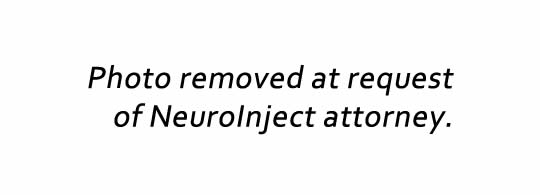Neuromarketing Firm Injects Buying Impulses
 San Jose-based NeuroInject thinks they have developed the killer app for neuromarketers: a way to not only sense what customers think about an advertisement or product they are viewing, but to actually make the customer want it.
San Jose-based NeuroInject thinks they have developed the killer app for neuromarketers: a way to not only sense what customers think about an advertisement or product they are viewing, but to actually make the customer want it.
“For years, people have been talking about a ‘buy button’ in the brain, but always in a metaphorical sense,” said NeuroInject CEO Colin Pastakis. “Now, we know there actually is a tiny area of the brain directly associated with purchase decisions. And, our new cap technology can change its state.” Pastakis would not identify the specific brain structure involved, as the firm has a patent pending on their process.
The premise is simple enough. Subjects are recruited for a market study in which they will view a few commercials while their responses are being monitored. The cap looks like a typical EEG cap used by other neuromarketing firms, but has one key difference. Although Pastakis was unwilling to divulge exactly how it works, at the point when the product or brand logo appears on the screen, a brief electromagnetic pulse can be sent to activate the area of the brain NeuroInject identified as related to a buying decision.
“It really works,” Pastakis said. “We’ve seen subjects drive out of our parking lot, and pull into the convenience store across the street to buy a soft drink whose commercial they just watched. And, they are completely unaware of why they did that.” A followup survey showed that 87% of the subjects purchased the soft drink in question within 24 hours after the study. When asked why they made the purchase, “I was thirsty” and “I like the taste” were the most common answers, according to Pastakis.
We asked Pastakis about safety. “No worries,” he said. “Even at full power, our cap emits less radiation than four or five cell phones. And, we know cell phones are perfectly safe.”
Pastakis was unable to provide a client list, stating he was bound by non-disclosure agreements. The firm has ambitious plans to expand nationwide. “We have to provide scalability for our clients,” Pastakis said. “Eventually, we’ll be conducting studies in hundreds of cities.”
Until they can ramp up their location count, NeuroInject is focusing on working with smaller numbers of influential individuals. “Bloggers are the easiest to attract. We invite them to a special event for ‘elite influencers’ and tell them we want their opinion on a new product. Providing free food and drinks really increases the yield factor.” After the studies, according to Pastakis, 72% wrote a favorable post about the product, and 89% tweeted about it. One well-known blogger not only wrote a blog post about the product but tweeted about it through several accounts, with each account repeating the message several times.
This technology seems certain to raise new questions about the nascent neuromarketing industry, but Pastakis isn’t concerned. In fact, he invites critics to participate in a study personally to assure themselves of its safety. “The last vocal critic we wired up concluded there was no reason for concern and left singing our praises,” said Pastakis.
[NOTE: This was our April 1, aka April Fool’s Day, post.]
